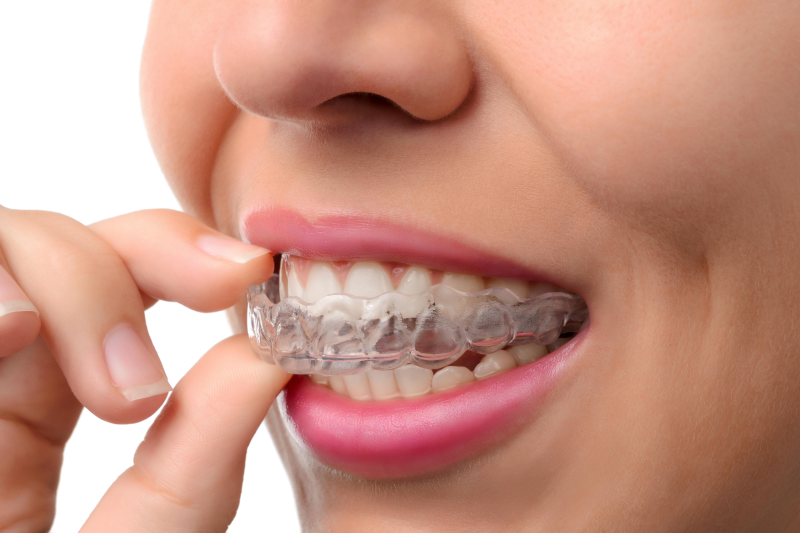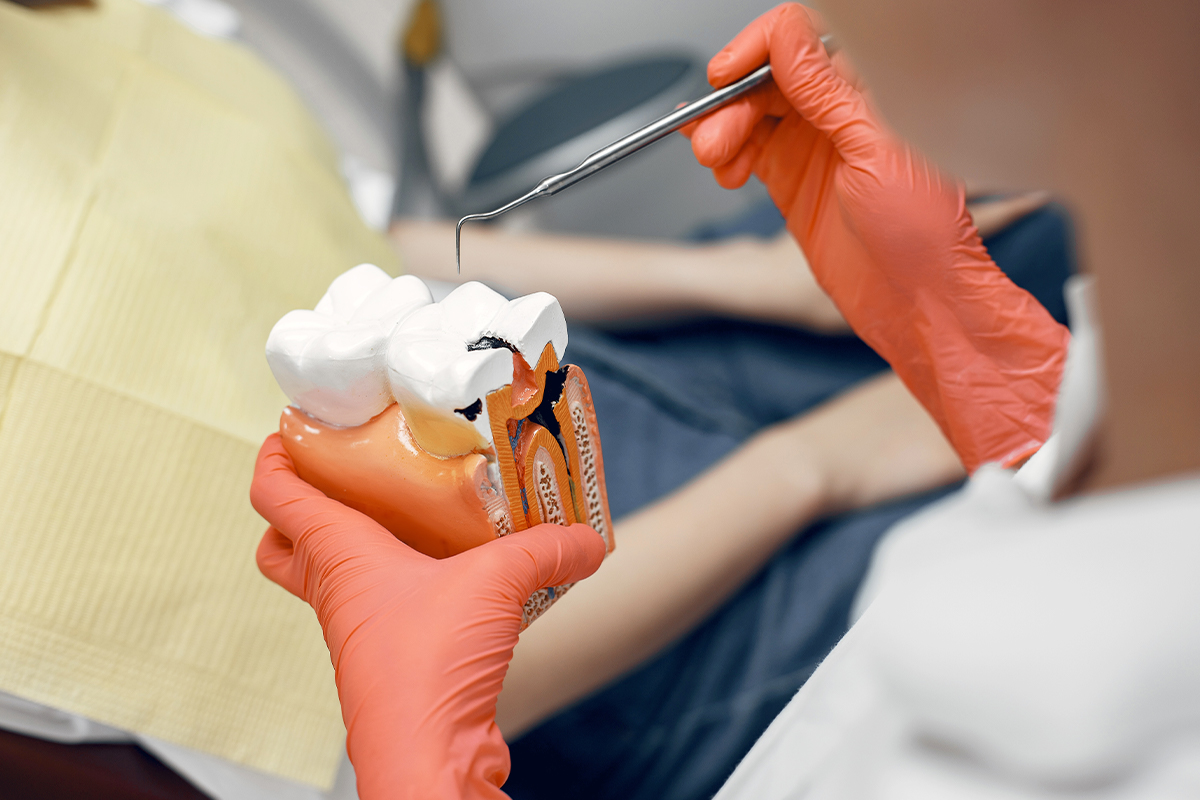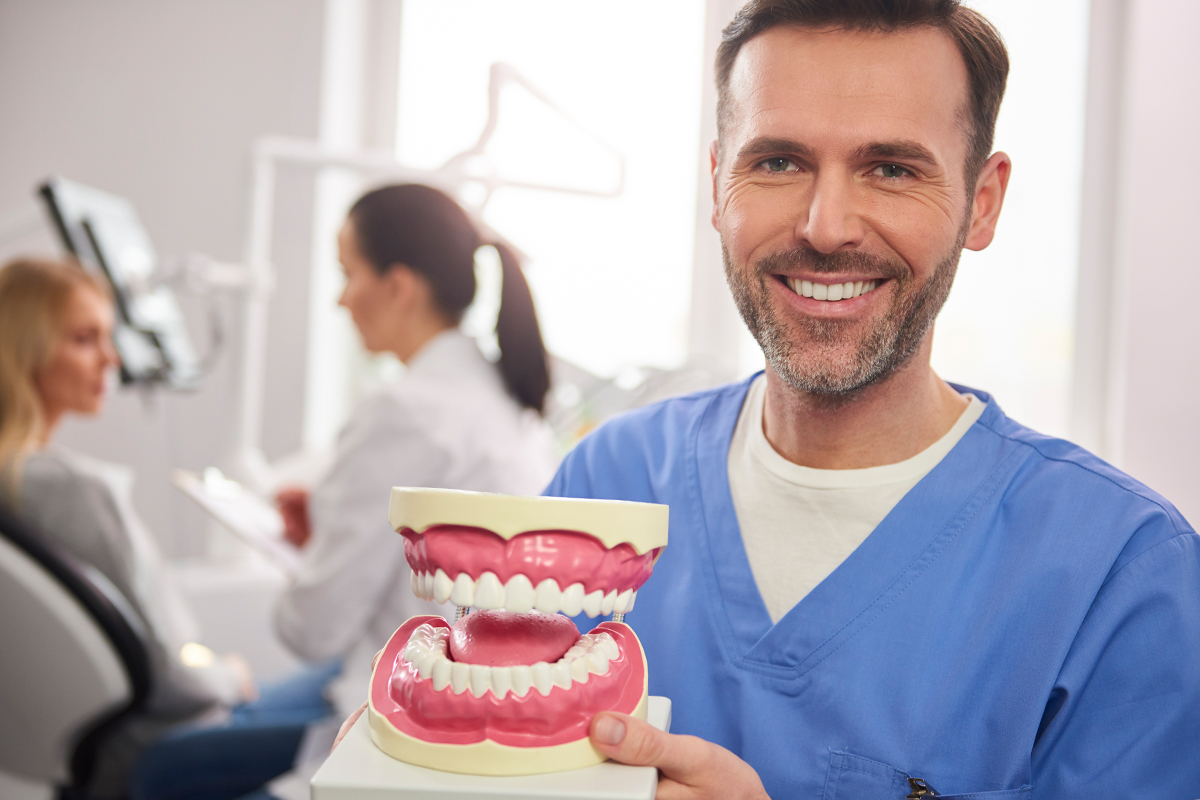What are orthodontic aligners and how do they straighten teeth?
Orthodontic aligners, or clear aligners, are very thin, transparent plastic trays worn to correct irregularities in dental alignment. This is the most modern, efficient, and straightforward way of straightening teeth.
They are custom-made based on the patient's dental impression. The patient undergoes an oral examination, and a comprehensive X-ray of all teeth and joints is taken. It is advisable for the patient to first address any necessary dental treatments, such as fillings, and have their teeth cleaned of tartar and pigmentation. After these preparations, dental impressions are taken. Based on the impression, computer software virtually moves the teeth into the correct position, and based on that movement, the exact number of aligners needed to correct the irregularity is calculated. This information, along with the duration, cost, and treatment plan, is then presented to the patient, and aligner fabrication proceeds only with the patient's consent. Additionally, with this technology, we can immediately show the patient what the final result will look like.
The greatest advantage of orthodontic aligner treatment is that once the aligners are given to the patient, there is no requirement for regular orthodontic check-ups. This simplicity of treatment is often preferred by patients living abroad or those with busy schedules who cannot make monthly visits. Significant benefits of orthodontic aligners include their inconspicuous appearance in the mouth, no food restrictions (unlike with fixed braces), and easy maintenance of oral hygiene. It should be emphasized that they are extremely comfortable to wear. The pressure exerted is evenly distributed across all surfaces of the teeth involved in the system, resulting in less pressure compared to other treatment methods, with no irritation to the oral mucosa, cheeks, or gums, and no scratching from sharp edges.
Patients also appreciate the versatility of the treatment. For example, only the upper or lower teeth can be treated, or it can be combined with fixed braces to correct one jaw with aligners while the other uses fixed braces simultaneously. Of course, the duration of treatment depends on the complexity of the case, with minor irregularities requiring shorter therapy, and vice versa. So, we often have patients who complete their treatment in less than three months. Orthodontic aligners are also suitable for patients who have had previous treatment with fixed braces and have noticed slight or significant relapse after the completion of treatment.
Can all irregularities be treated with orthodontic aligners?
Almost all irregularities can be treated with aligners, but there is still a small number of diagnoses that are indicated exclusively for fixed braces. Fortunately, our orthodontic department is one of the leading in the region, so we have multiple types of fixed braces to treat all orthodontic diagnoses and accommodate the wishes of our patients while also adjusting prices to fit every budget.
Can teeth correct themselves over time?
Unfortunately, after the age of 12, it is almost impossible for teeth to correct themselves, and in fact, with the growth of the lateral teeth, they become more and more crowded. If there is not enough space for all teeth, this leads to much bigger problems. The first thing patients notice is compromised aesthetics, leading to insecurity when smiling or talking, and subsequently a decrease in self-confidence. What we, as orthodontic specialists, first notice is compromised oral health. The prerequisites for oral health are properly aligned and straight teeth, as well as a harmonious bite, as without these key elements, basic functions such as chewing, speaking, and maintaining oral hygiene become difficult. Unfortunately, the more crowded the teeth, the harder it is to clean the spaces between them, leading to an increasing number of cavities in that area. Often, this results in treatments or even premature tooth loss. From a statistical standpoint, teeth with proper contact points established during orthodontic treatment are healthier and less prone to decay. Similarly, a compromised bite leads to speech disorders, with patients noticing that they cannot pronounce certain sounds correctly, and over several years of chewing, joint pain can arise. All of these are consequences that are easier to prevent with timely orthodontic therapy. The fastest tooth movement occurs around the ages of 12 to 14, and orthodontic treatments are completed first during this period. It should be emphasized that there is no age limit in orthodontics, and it is possible to undergo treatment with fixed braces or aligners as long as the patient has natural teeth and a desire for a beautiful smile.
Will teeth remain in their new position after treatment?
Certainly, they will. Similar to fixed and removable appliances, there is always a possibility of teeth returning to their original position after orthodontic treatment with aligners. Therefore, we provide our patients with retainers after completing the therapy. Retainers can look just like orthodontic aligners or be thin wires fixed on the inner side of the dental arch. In any case, we ensure that teeth no longer move. As an institution, we need to emphasize that in one appointment, we offer patients the opportunity to complete multiple phases for the fabrication of orthodontic aligners.
In one appointment, it is possible to:
1. Obtain two-dimensional X-rays of all teeth.
2. Obtain CEPH X-rays necessary for a detailed analysis of orthodontic therapy.
3. Take photographs and create an intraoral and profile image of the patient to adequately monitor the progress of orthodontic treatment.
4. Take impressions of the upper and lower jaw and create situational models.
From the beginning of treatment to retainers, we are here to provide patients with the best and most efficient form of orthodontic treatment, and their only obligation is to remain motivated, wear the aligners daily, and achieve noticeable results as quickly as possible in this unnoticeable way.






